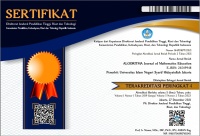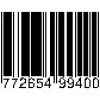IN-SERVICE ELEMENTARY SCHOOL MATHEMATICS TEACHERS’ EXPERIENCE ON CHANGING BELIEFS ABOUT TEACHING, LEARNING, AND THE NATURE OF MATHEMATICS
Abstract
Abstract
This study aims to describe the experiences of primary school mathematics teachers in changing their beliefs about teaching, learning, and the nature of mathematics. The data were reduced and coded using qualitative methods to answer the research questions. Data were obtained through in-depth interviews with three primary school teachers who participated in the National Movement for the Eradication of Mathematics Blindness (Gernas Tastaka) Program in Muara Enim District, South Sumatra. The results showed that in teaching, previously, they thought that math teaching only delivered material from textbooks and practiced calculations. Now, they believe teaching should be contextualized, use the Concrete-Pictorial-Abstract approach, and utilize teaching aids. In learning, they initially believed that math is only about calculation. Now, they understand that math learning should be more meaningful and relevant to real life. Teachers previously believed that mathematics is the application of procedures and calculations. Now, they believe that mathematics includes the application of mathematical ideas in everyday life.
Abstrak
Penelitian ini bertujuan mendeskripsikan pengalaman guru matematika sekolah dasar dalam mengubah keyakinan mereka tentang pengajaran, pembelajaran, dan hakikat matematika. Penelitian ini menggunakan metode kualitatif, data direduksi dan dikodekan untuk menjawab pertanyaan penelitian. Data diperoleh melalui wawancara mendalam dengan tiga guru sekolah dasar yang mengikuti Program Gerakan Nasional Pemberantasan Buta Matematika (Gernas Tastaka) di Kabupaten Muara Enim, Sumatera Selatan. Hasil penelitian menunjukkan dalam pengajaran, sebelumnya mereka menganggap pengajaran matematika hanya menyampaikan materi dari buku teks dan melatih perhitungan. Kini, mereka percaya pengajaran harus kontekstual, menggunakan pendekatan Konkret-Piktorial-Abstrak, dan memanfaatkan alat peraga. Dalam pembelajaran, mereka awalnya berkeyakinan bahwa matematika hanya tentang perhitungan. Sekarang, mereka memahami bahwa pembelajaran matematika harus lebih bermakna dan relevan dengan kehidupan nyata. Para guru sebelumnya percaya bahwa matematika adalah penerapan prosedur dan perhitungan. Kini, mereka meyakini bahwa matematika mencakup penerapan ide-ide matematis dalam kehidupan sehari-hari.
Keywords
References
B. L. Berg. (2001). Qualitative research methods for the social sciences. Allyn & Bacon.
Belbase, S. (2024). Teacher Belief, Knowledge, and Practice: A Trichotomy of Mathematics Teacher Education. Pragyaratna प्रज्ञारत्न, 6(2), 186–209. https://doi.org/10.3126/pragyaratna.v6i2.70992
Beswick, K. (2006). The importance of mathematics teachers’ beliefs. Australian Mathematics Teacher, 62.
Beswick, K. (2012). Teachers’ beliefs about school mathematics and mathematicians’ mathematics and their relationship to practice. Educational Studies in Mathematics, 79(1), 127–147. https://doi.org/10.1007/s10649-011-9333-2
BSKAP Kemendikbudristek RI. (2022). Capaian Pembelajaran Mata Pelajaran Matematika Fase A - Fase F untuk SD/MI/Program Paket A, SMP/MTs/Program Paket B, SMA/MA/Program Paket C.
Carolyn Boyce, B. (2006). Monitoring and Evaluation-2 CONDUCTING IN-DEPTH INTERVIEWS: A Guide for Designing and Conducting In-Depth Interviews for Evaluation Input. Pathfinder international.
Ernest, P. (1989). The impact of beliefs on the teaching of mathematics. The Impact of Beliefs on the Teaching of Mathematics, 249–254.
Gudmundsdottir, S. (2001). Narrative research on school practice. In V. Richardson (Ed.). In Fourth handbook for research on teaching. New York: MacMillan.
Main, P. (2021). Concrete Pictorial Abstract Approaches In The Classroom. Https://Www.Structural-Learning.Com/Post/Concrete-Pictorial-Abstract-Approaches-in-the-Classroom.
Moen, T. (2006). Reflections on the Narrative Research Approach. International Journal of Qualitative Methods, 5(4).
NCTM. (2000). Executive Summary, Principle and Standards for School Mathematics. Journal of Equine Veterinary Science, 18(11), 719. https://doi.org/10.1016/s0737-0806(98)80482-6
Pajares, M. F. (1992). Cleaning Up a Messy Construct. Review of Educational Research, 62(3), 307–332. http://about.jstor.org/terms
Quigley, M. T. (2021). Concrete Materials in Primary Classrooms: Teachers’ Beliefs and Practices about How and Why they are Used. Mathematics Teacher Education and Development, 23, 59–78.
Shuxratovna, R. N. (2024). PEDAGOGICAL POSSIBILITIES OF IMPLEMENTING THE CPA (CONCRETE-PICTORIAL-ABSTRACT) APPROACH. International Journal of Pedagogics, 4(2), 68–76. https://doi.org/10.37547/ijp/Volume04Issue02-13
Skott, J. (2014). The promises, problems, and prospects of research on teachers’ beliefs. In International handbook of research on teachers’ beliefs. Routledge. https://www.researchgate.net/publication/266774641
Suo Hui, C., Ngan Hoe, L., & Phong Lee, K. (2017). Teaching and Learning with Concrete-Pictorial-Abstract Sequence-A Proposed Model. In The Mathematics Educator (Vol. 17, Issue 2).
DOI: 10.15408/ajme.v6i1.42914
Refbacks
- There are currently no refbacks.












